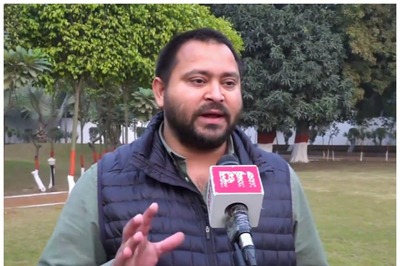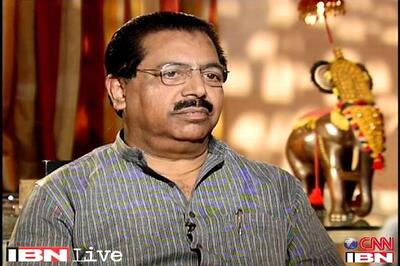
views
The best tax saving options under Sec 80C are-
If you invest in an ELSS Fund or Tax Saving Mutual Fund, it will be considered as the best tax saving option. These funds are specially designed to give you the dual benefit of saving taxes and maximising your investment return. You can invest in ELSS funds and save tax up to Rs 46,800. ELSS funds invested for the long-term had delivered higher returns than traditional funds such as FD, PPF or NPS. It comes with a lock-in period of three years.
Other investment options under Section 80C are-
Investments in tax-saving fixed deposits
Tax-saving FDs are like regular FDs, but they come with a lock-in period of 5 years. You can take a maximum deduction of up to Rs 1.5 lakh for investments in tax-saving FDs. Any resident individual is eligible to invest in tax-saving FDs. However, there is a lock-in period of 5 years. Also, interest earned on such investments is taxable. Generally, FD interest rates across banks range from 5.5% to 7.75% p.a.
Investments in PPF (Public Provident Fund)
Public Provident Fund is a long-term investment backed by the Government of India. Amounts deposited in a PPF account are eligible for tax deductions under Section 80C. The PPF account can be opened by resident Indian individuals, salaried or non-salaried individuals. However, a HUF cannot open a PPF account. It has a lock-in period of 15 years but can be further extended by five years. However, partial withdrawals are allowed after seven years. Currently, the PPF interest rate offered by the government is 7.1% p.a. You can make a minimum and maximum investment of Rs 500 and Rs 1.5 lakh, respectively. Also, the interest earned from PPF deposits is tax-free.
Investments in Employee Provident Fund (EPF)
Employee Provident Fund is a retirement benefit scheme available to salaried employees. The employer deducts 12% of the basic salary + Dearness allowance, which the employer deducts from the employee’s salary and deposits in the EPF or other recognised provident funds account. The employer should also contribute 12% of employees’ basic salary and dearness allowance in the EPF account. The EPF account of the employee needs to be opened if the employee’s basic salary is more than 15,000 per month. For the financial year 2020-21, the government offers an interest rate of 7.5% on the EPF account. The entire PF balance (including interest) is tax-free if withdrawn after a continuous service of 5 years.
Investments in NPS (National Pension System)
The NPS is a pension scheme started by the Indian government to allow the unorganised sector and working professionals to receive a pension after retirement. You can avail tax deduction of up to Rs 1.5 lakh under Section 80C by investing in NPS. Apart from the limit of Rs 1.5 lakh inclusive of Section 80C limit, one can also claim an additional deduction of Rs 50,000 for investment in NPS under Section 80CCD(1B). Every Indian citizen between the age 18 and 65 can invest in NPS. Partial withdrawal from NPS are allowed after 15 years but under special conditions. There is no limit on the maximum amount of contribution. Return on NPS varies between 12% to 14%. Also, note that contribution by the employer to an employee’s NPS account is not taxable up to 10% of the basic salary and dearness allowance (14% in case of central government employees) under Section 80CCD(2) the Income Tax Act.
Investments in ULIP (Unit-linked Insurance Plans)
ULIPs are a combination of investment and insurance. Part of the investment amount in ULIPs is used to provide insurance, and the rest is invested in the stock markets. You can claim tax deduction of up to Rs 1.5 lakh by ULIP investment under Section 80C of the Income Tax Act. An investor can buy ULIP for himself, spouse or child and claim the deduction. The return on ULIPs varies as it is market-linked. However, it may range between 12% -14%. Investment, withdrawals & maturity amounts are tax-free. However, the maturity amount will be taxable if the annual premium exceeds Rs 2.5 lakh in aggregate of all the ULIP plans during the financial year.
Investments in Sukanya Samriddhi Yojana (SSY)
Sukanya Samriddhi Yojana/Scheme is the most popular scheme by the Government of India introduced with a objective of the betterment of girl child in the country. The parents/guardians can open an account in the name of a girl child until she attains 10 years. Once the girl reaches the 18 years age, you can prematurely withdraw up to 50% of the deposit amount. The interest rate offered on SSY is 8.5% p.a. Investment is limited to a maximum of Rs 1.5 lakh in a financial year. Investment and withdrawals & maturity amounts are tax-free.
Payments for saving taxes under Section 80C
Payments in children’s tuition fees
The tuition fee paid for two children’s education is eligible for deduction under Section 80C of up to Rs 1.5 lakh. The fees should be paid for a full-time course only. The fee can be paid to any school, college, university or educational institute situated in India.
Life insurance premium payment
The annual premium paid for LIC in the taxpayer’s name or the taxpayer’s wife and children is an eligible tax-saving option under Section 80C. However, the deduction is valid only if the premium is less than 10% of the sum assured. For policies applied prior to 1 April 2012, the premium paid should not exceed 20% of the sum assured to claim this deduction.
Repayment of home loan
The repayment of the principal component of a loan taken to buy or construct a residential property is eligible for deduction under Section 80C. This deduction is also applicable for stamp duty, registration fees and transfer expenses paid.
Other tax saving options are
Interest on education loan
The taxpayer can claim a tax deduction for interest paid on loans taken for higher education. There is no upper limit to claim such a deduction in the income tax return. However, you can claim the deduction up to a maximum of 8 years starting from the 1st year of claim.
Medical insurance premium and medical expenditure
You can also claim a deduction for health insurance premium, Central Government Health Scheme (CGHS), and preventive health check-ups paid during the year for self, spouse, dependent children. You can claim up to Rs 25,000 under Section 80D of the Income Tax Act. If you are a senior citizen, you can claim a deduction of up to Rs 50,000. However, if there is no health insurance premium, the taxpayer can claim a deduction for medical expenses incurred during the year under Section 80D. However, to claim such expenses, you need to satisfy certain conditions.
Similarly, if such expenses are made for parents, then the taxpayer can claim an additional deduction of Rs 25,000. And if expenses are incurred for senior citizen parents, the taxpayer can claim an additional deduction of up to Rs 50,000. Hence, the taxpayer may claim up to Rs 1 lakh deduction under Section 80D for expenses incurred for health insurance premium or medical bills and save taxes.
Read all the Latest Business News here




















Comments
0 comment